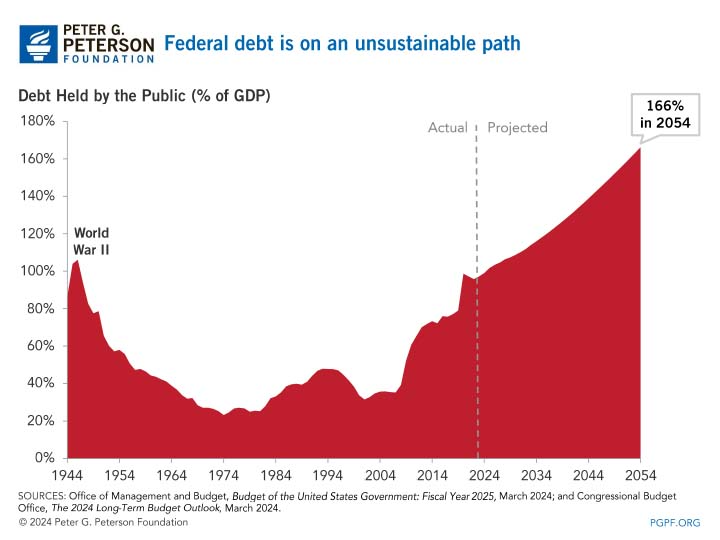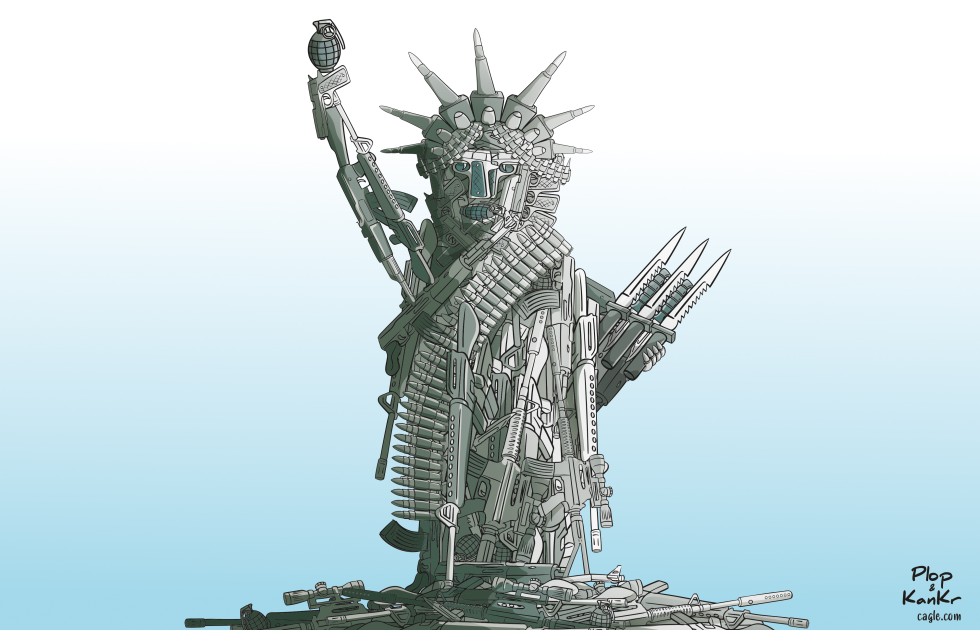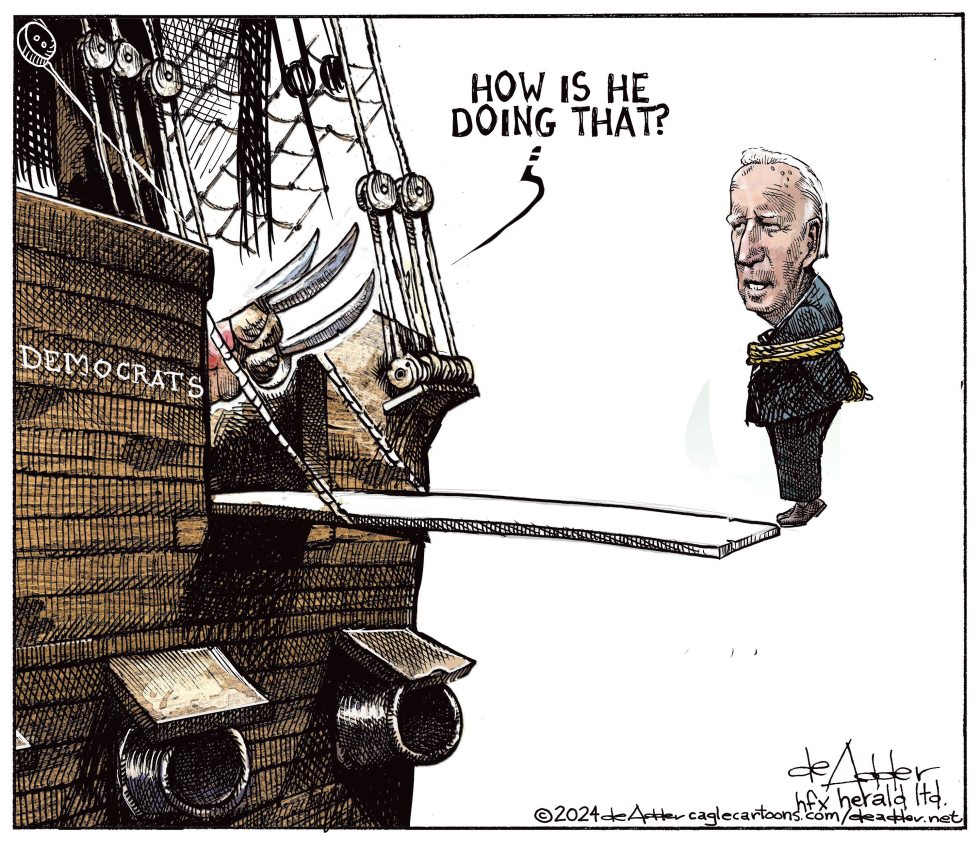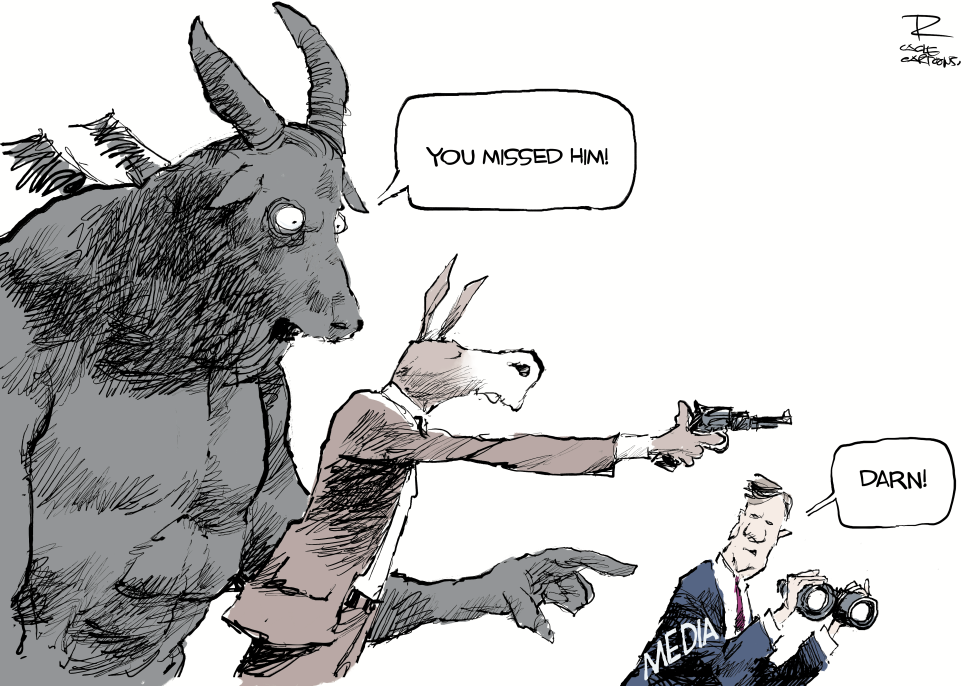HIGHER INTEREST RATES COULD CAUSE THE U.S. NATIONAL DEBT TO SKYROCKET
The national debt is projected to climb rapidly over the next several years, and higher interest rates could make the nation’s fiscal outlook even worse. The Congressional Budget Office (CBO) released long-term projections in March, showing that debt held by the public would climb from 99 percent of gross domestic product (GDP) in 2024 to 166 percent in 2054 if no changes to current law are made. Rising interest rates are a significant contributor to that growth in debt.
Interest rates on U.S. Treasury securities have a significant influence on federal borrowing costs, and therefore, on the amount of federal debt accrued. According to CBO’s projections, the average interest rate on U.S. Treasury securities could climb from 3.1 percent in 2024 to 3.8 percent in 2054. However, variations from those projections could significantly impact the amount of federal debt outstanding.
A higher interest rate scenario, in which the average interest rate on federal debt is 5 basis points, or 0.05 percentage points, higher than CBO anticipated in 2024 and increases by that amount in each year thereafter — eventually reaching 5.8 percent in 2054.
In CBO’s higher interest rate scenario, federal debt could reach 217 percent of GDP in 2054 — around 50 percentage points higher than CBO’s baseline projections. If interest rates are lower than the agency projected, federal debt would still climb, but by a lesser amount — reaching 129 percent of GDP by 2054.
The national debt is already on an unsustainable path, caused by a structural mismatch between spending and revenues, and rising interest rates could exacerbate that problem. Even if interest rates decline from today’s levels and stay low, debt will exceed its historic high and continue to rise.











